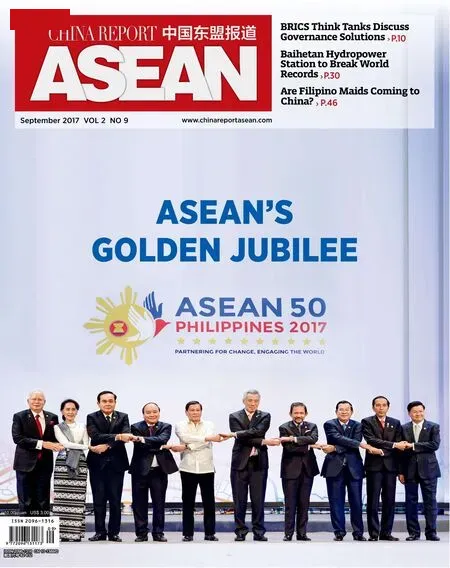Importing Rice Benefits China, Southeast Asia Alike
By Wei Jianguo
Importing Rice Benefits China, Southeast Asia Alike
By Wei Jianguo
Against the backdrop of a surge in protectionism worldwide, China must work to properly coordinate its food imports

About the author: Wei Jianguo is Vice Chairman of the China Center for International Economic Exchanges.
September marks rice harvesting season in Southeast Asia. Thailand, Vietnam, Cambodia and Pakistan are well-known producers of high quality long-grain rice and middle and high-end glutinous rice. Farmers in these countries are anticipating that China, the largest consumer of rice in the world, is set to import more high quality rice than ever before.
Food imports, however, are a complicated issue.
Some people believe that as China has a large population, its top priority should be to ensure food security. Some argue that food supply should be based solely on domestic production, thus ensuring food security. China produces both rice and wheat, and therefore, it should only import less commonlyproduced crops.
Others argue that against the backdrop of globalization, and taking both global allocation and domestic market demand into consideration, China could import high-quality agricultural products so as to meet the needs of domestic consumption while promoting the development of competitive industries of neighboring countries.
I agree with the latter opinion.
According to China’s National Bureau of Statistics, China’s grain producing areas in 2016 shrank by 0.3 percent compared to 2015. In 2016, the total output of grain in China was 616 million tons, down 0.8 percent from the previous year. As China’s grain growth has slowed down, it should increase grain imports to enrich domestic supply.
Secondly, with the improvement of Chinese people’s living standards, domestic demand for middle and high-end glutinous rice, long-grain rice and fragrant rice has been growing. The amount of high quality long-shaped rice and glutinous rice produced in China is insufficient to meet demand. As Thailand, Vietnam and Cambodia enjoy abundant rainfall and sunlight, long-grain rice can be harvested three times per year. If China imports rice from these countries, it can not only save its water and soil resources but also enhance food security in China.
Taking advantage of its capital, technology and equipment, China can invest in the rice industries in countries along the Belt and Road so that their rice industry can be upgraded, steadily increasing the total production and per-unit yield of high quality rice. Investing in these industries can also comprehensively promote the construction of drying, processing, warehousing and logistics facilities with an aim toward forming the advantages of the agriculture industry in these countries in the short term, therefore helping their economies develop.
In 2016, China imported 3.53 million tons of rice, up 5.49 percent from 2015. This increase mainly came from Southeast Asian countries. China can import more rice from these countries so as to achieve economic integration and interconnected development and deliver benefits to all.
Some people may ask if imported rice could impair the interests of Chinese farmers. In this regard, China can protect its farmers’ interests based on pricing without negatively influencing the overall domestic consumer market. Generally, the price of rice imported from Thailand and Japan is higher than domestic rice, some of which is even sold at more than 100 yuan (US$15) per kilogram, forming a price gap with the middle and low-end rice produced in China. In the future, China will still focus on importing high-end long-grain rice, while middle and low-end ordinary rice will continue to not be imported.
In conclusion, under the backdrop of a surge in global protectionism in recent years, and in the face of the changes in market demand, China must coordinate domestic and international markets and make full use of these two resources in order to establish a more stable and secure global granary for China. At the same time, China needs to accelerate promotion of mutually beneficial cooperation with the rest of the world in order to build a broader community of interests, which is a road of win-win cooperation for China to go down.

